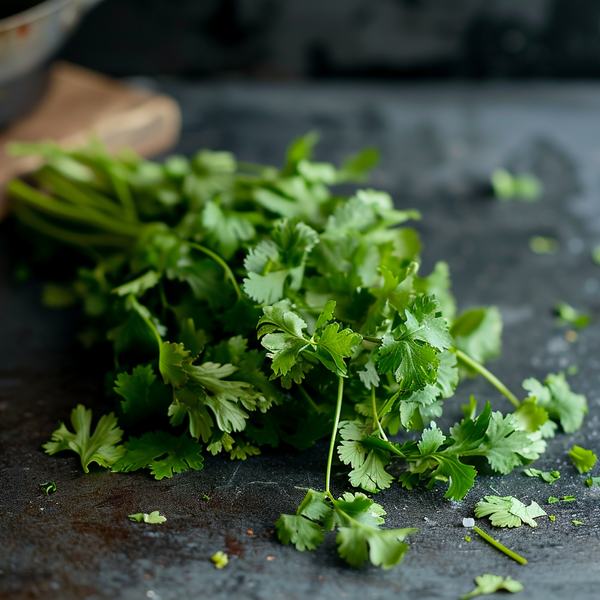
Coriander
Coriander, known for its fragrant, citrusy flavor, is used extensively in cooking worldwide, both in its fresh leaf form (often referred to as cilantro) and as dried seeds. Each part of the plant offers a distinct taste and can be used in various culinary applications:
Fresh Coriander (Cilantro):
Salads: Fresh coriander leaves are often added to salads for a burst of flavor.
Salsas and Dips: It's a key ingredient in many salsas, chutneys, and dips, including guacamole and Indian green chutneys.
Garnishes: Coriander leaves are used to garnish soups, curries, and noodle dishes, adding a fresh, citrusy note.
Marinades: Chopped coriander can be mixed into marinades for meats, poultry, and fish to impart its distinctive flavor.
Sauces: It's used in various sauces, such as chimichurri or green Thai curry paste, where it complements other herbs and spices.
Dried Coriander Seeds:
Spice Mixes and Seasonings: Coriander seeds are ground and used in spice mixes, including garam masala, curry powders, and Latin American adobos.
Pickling: Whole or crushed coriander seeds are a common addition to pickling brines for vegetables.
Baking: Ground coriander is used in some baked goods, such as bread and cookies, to add a warm, citrusy flavor.
Stews and Braises: The seeds are used to season stews, braises, and slow-cooked dishes, contributing a subtle citrus and floral flavor.
Roasting: Coriander seeds are often used in spice rubs for roasted or grilled meats and vegetables.
Coriander Stems and Roots:
Flavoring Soups and Broths: In some cuisines, coriander stems and roots are used to flavor soups and broths.
Pastes and Marinades: Especially in Southeast Asian cooking, the roots are pounded into pastes along with other spices and herbs to marinate meats or flavor curries.
Coriander's versatility makes it an essential ingredient in many cuisines, including Indian, Latin American, Middle Eastern, and Southeast Asian. Its unique taste can elevate a dish, providing a refreshing lift or a complex spice note, depending on the part of the plant used. When cooking with coriander, it's important to consider the balance of flavors, as its strong taste can dominate milder ingredients.
Nutritional Information
calories
23
carbohydrates
3.67 g
fats
0.52 g
protein
2.13 g